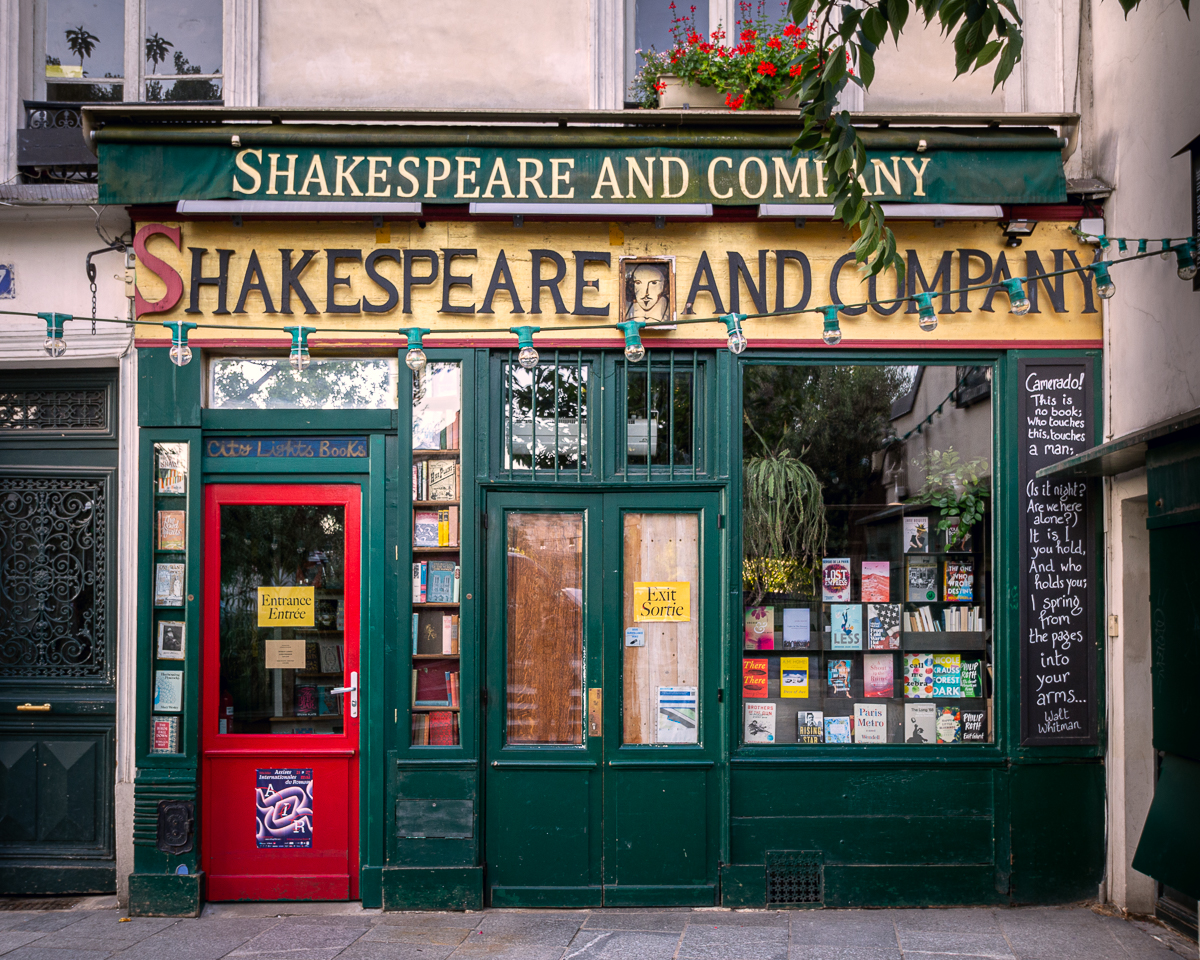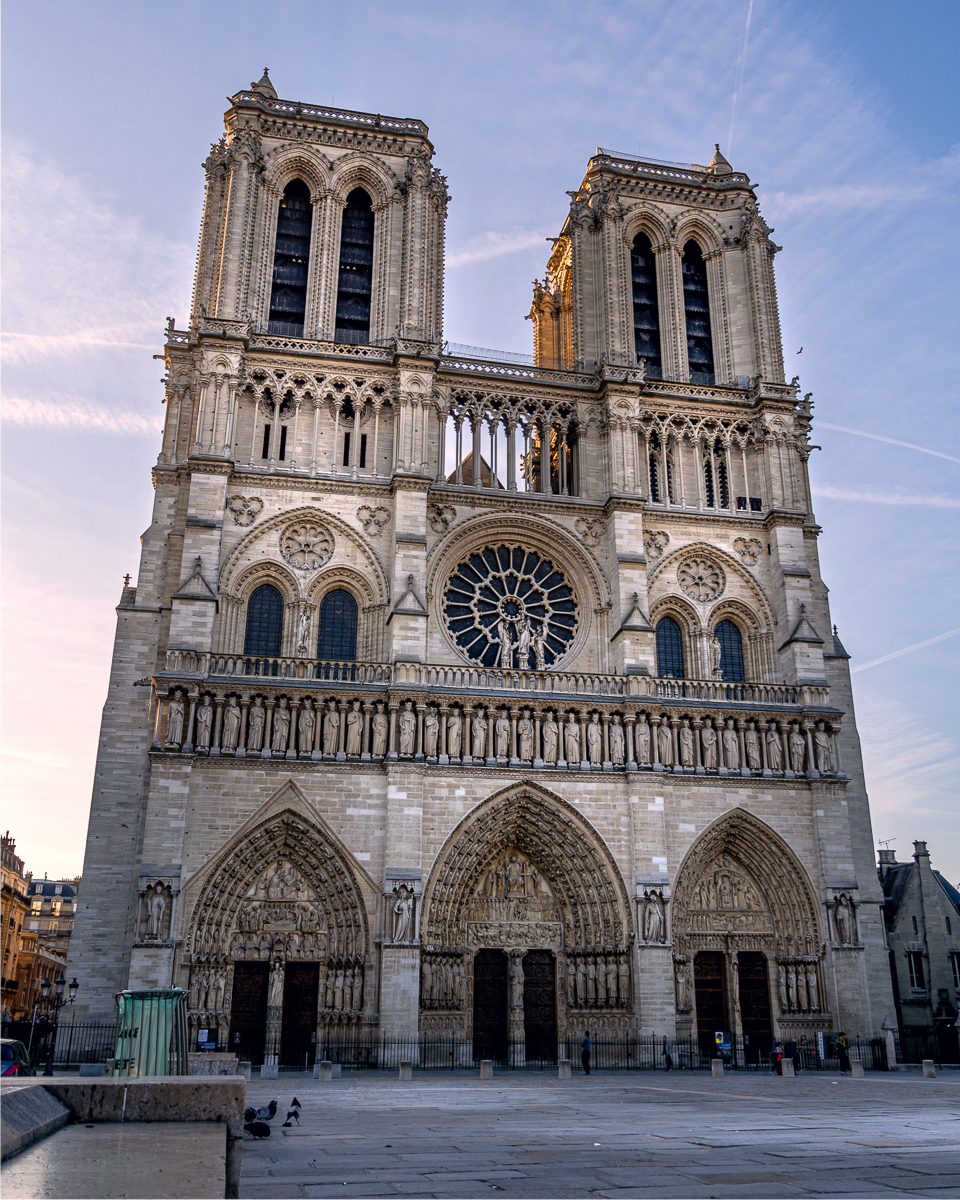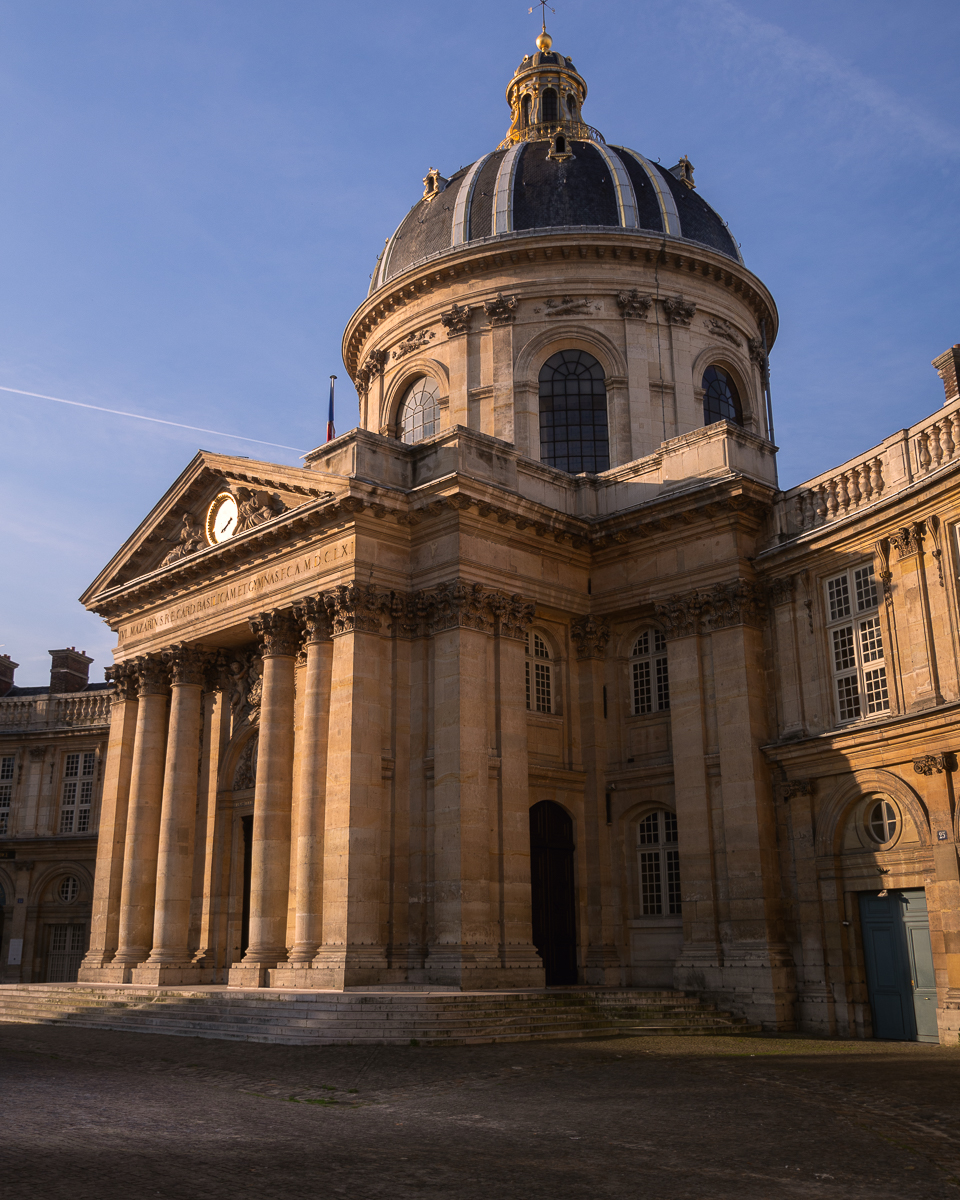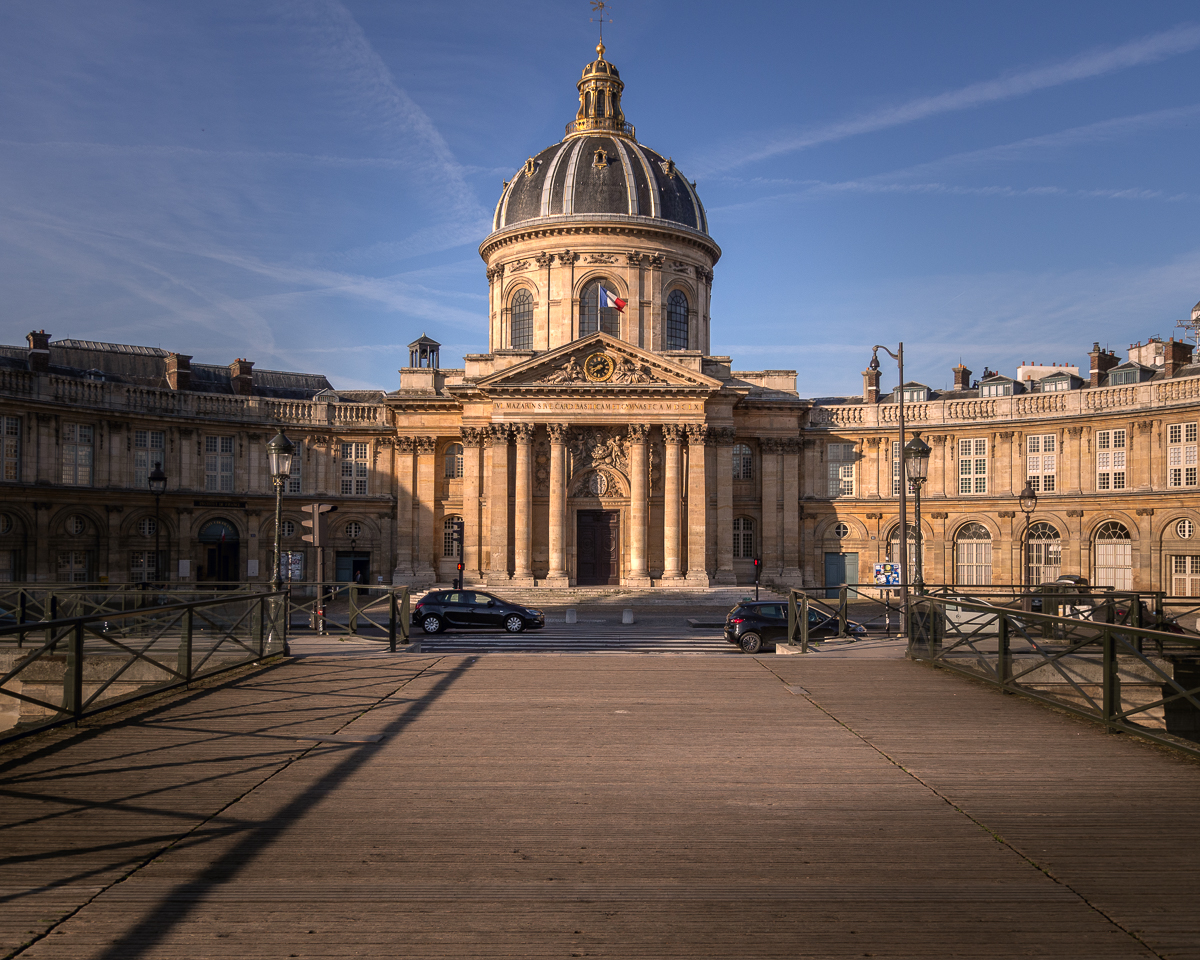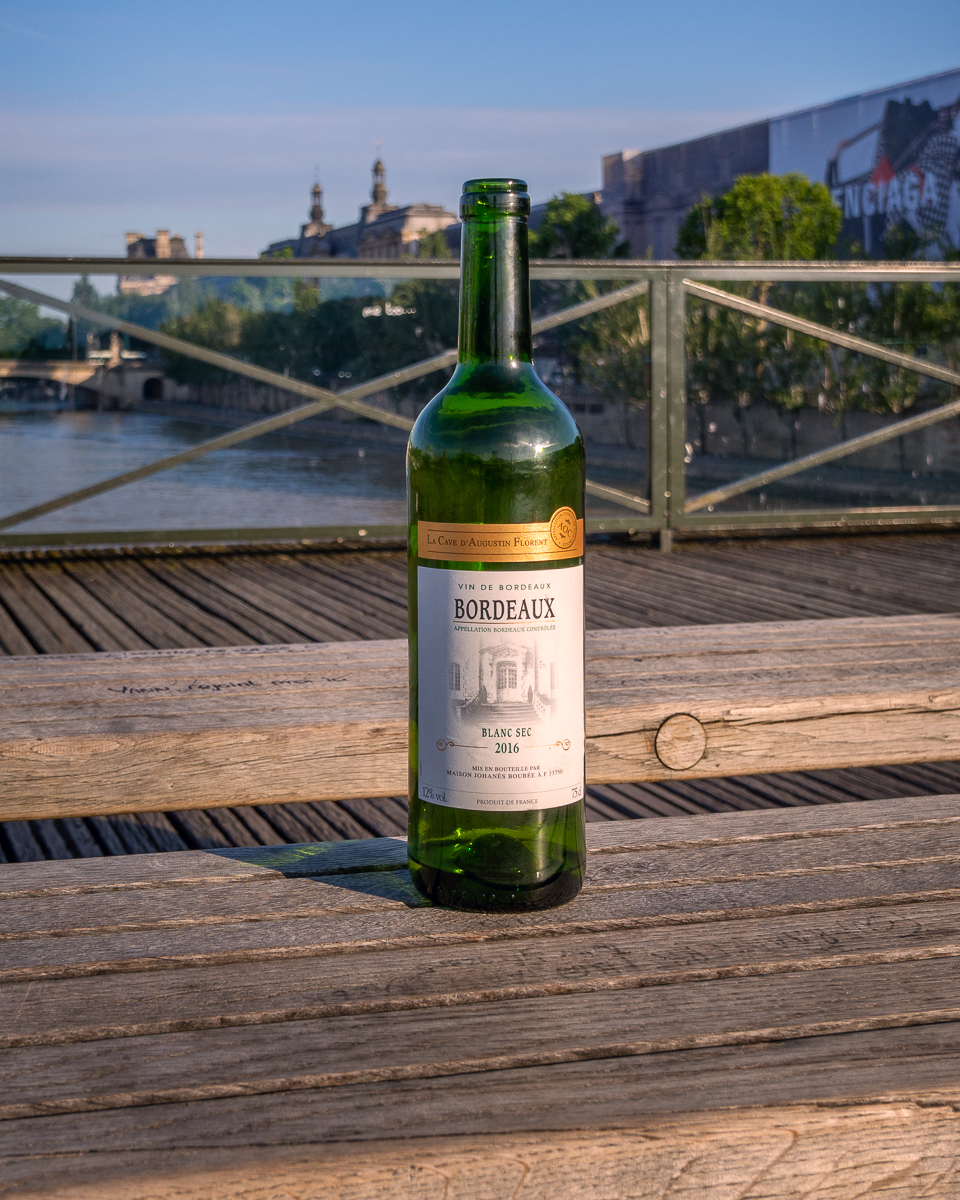My feet made a sound like a galloping horse on the wood as they skipped down the spiral staircase. With a thump of the glass my palm forced open the door, and my feet picked up the pace carrying me in a near run down Rue Saint-Denis.
I had woken, once again, with the cool breeze of an uncharacteristically chilled air blowing through the double windows of the apartment. But this morning had a decidedly different feeling. For the first time I possessed the drive and energy needed to explore the waking city. This was a normal motivation that had been entirely missing for the last two weeks and that had continued to plague me. I suppose it was the sense of urgency in the finality of it all as in a few short hours I would be buckling an airplane seatbelts around my waist. While my thoughts had already turned toward home, I was very consciously aware, maybe more than ever, that I was still in Paris. While everyone slept I grabbed my coat, my camera and camera bag and abandoned my half-full cup of coffee.
The city was silent, empty of pedestrians – only a trickle of traffic carried the first commuters to work. The sun had just started peaking above the rooflines, faintly brightening the white limestone. I returned to the Île de la Cité replaying the history through my thoughts one final time. My pace and urgency slowed as my mind drifted through a thousand years of change. And with it came a calmer, steadier breath. I surveyed the geography attempting to see through the grand government buildings like looking for an optical illusion in a jumbled poster. Soon squat homes began to materialize. They were made of rough stone, thatch roofs, wood timbers and straw daub. As they filled in the open spaces narrow streets were formed and the government buildings vanished entirely from my vision. Smoke from chimneys clouded the air and horse-drawn carts bumped along rutted, wet and dry crusted lanes. Farm animals foraged in front of inns and taverns, and blacksmiths’ and tanners’ workshops overflowed the confines of their space. A Paris of the past engulfed me, burned my eyes with soot and filled my nose with chaf. Off in the distance Notre Dame rose high above the buildings like a monolithic marvel. It looked unchanged as it had for half a millennium. The plaza, a sea of concrete today, began to fill in my imagination with the same unbroken organic city structure. It stretched all the way to the cathedral’s front doors.
A lone man in a suit briskly traversed the desolate square on his morning commute and my daydream vision vanished in a flash. I wished it had been real so that I could soak it in longer. Crossing the river I entered the ancient Roman town, today a jumble of medieval alleys and a hodgepodge collection of buildings spanning the full history of Paris. Famously known as the Latin Quarter, the neighborhood preys on the throngs of tourists that crowd its streets by both day and night. And they come rightfully so. The writer’s haunt Shakespeare and Company is only related in name to the shop where Sylvia Beech lent money and books to Hemingway and Joyce. Yet it retains the romantic spirit of the Lost Generation and panders to the romantic hearts of those craving something tangible to celebrate from the era. Quiet in this early morning, by midday the shop and attached namesake cafe will be overrun with pilgrims.
Wandering deeper into the quarter is like traveling farther back in time. Half ruined churches and quaint medieval squares appear around corners like portals to the past. Houses have been stitched together through the centuries, their exposed seams reveal their patchwork of stone. The occasional wooden structure can be found plugging cracks between homes like plaster. They lean on their sturdier neighbors like old locals tipsy on French wine. Structures like these are all that existed in some of the historic towns and villages we visited in Alsace. But in a large city like Paris, which has been rebuilt many times over a thousand years, they are few. Enthusiasts scour the city looking for sealed away signs of the past like an archaeological scavenger hunt. Paris’ Paris’ enduring charm doesn’t rely on these aged artifacts alone.
The most popular addresses of the left bank were uncharacteristically sleepy in the early morning. Lone workers carried boxes of colorfully fresh produce and flowers. Hoses washed paving clean from the previous day’s activity. My camera shutter snapped frequently and was one of the loudest sounds to be heard.
An hour and a half and three miles later I found myself alone on the Pont des Arts, the iconic footbridge crossing the Seine. Lone, empty wine bottles sat on benches, their intoxicating contents emptied into the bellies of romantics under the city lights mere hours earlier. To my pleasure I quickly noticed the wood planked bridge had been freed of the burden of the thousands of love locks that threatened to pull it into the river. To prevent more locks being added plexiglass had replaced the lattice on the iron railing. Vandals being vandals now chose to scrawl their affections on the glass with marker – hardly a visual improvement. Still, all along the bridges and banks of the Seine, locks are attached to anything their hairpin arms can wrap around.
I continued my walk by the docked barges and sailboats and imagined how inspiring it must be to sleep on the river and awake to views of Notre Dame backlit by the low rising sun. I strolled through the pre-revolution Place Dauphine. Secluded in plain sight it is one of the great secrets of the Île de la Cité. Mirroring the triangular eastern tip of the island the gravel inner courtyard is tranquil and creates a space that feels like a private garden. My head was the clearest it had been in days, and I felt warm with satisfaction as I slowly made my way back to the apartment.





















